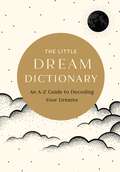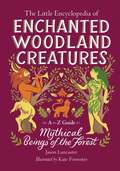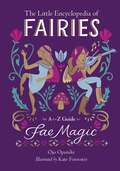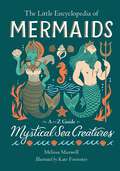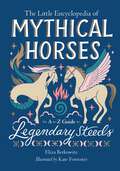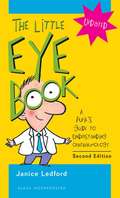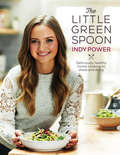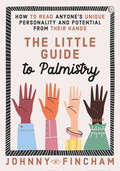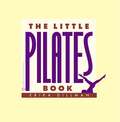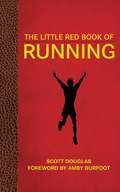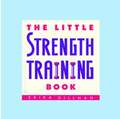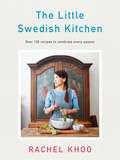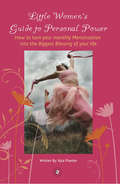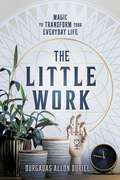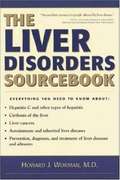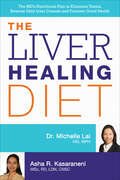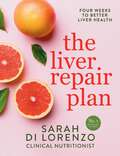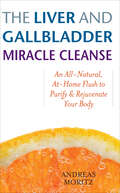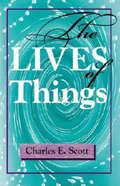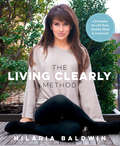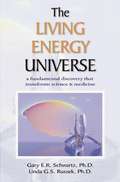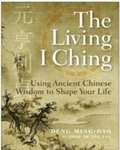- Table View
- List View
The Little Dream Dictionary: An A-Z Guide to Decoding Your Dreams
by Tim RaybornDive into a world of new insights and self-discovery as you unlock the secrets of your subconscious with this collection of 1,000+ common dream symbols and their meanings. Unlock the mysteries of your dreams with this comprehensive dream dictionary, featuring over 1,000 of the most common dreams and their interpretations. Whether you dream of being underwater, flying, or taking an exam, this handy guide offers insightful and straightforward explanations that illuminate the deeper meanings behind your dreams. Each concise entry will provide you with greater clarity and understanding of yourself and your subconscious thoughts, desires, and fears. Whether you&’re a dream enthusiast or a newcomer to dream analysis, this book is your essential companion. Decode the secrets of your dreams and unravel your subconscious with the turn of every page. GAIN NEW INSIGHTS: Uncover the layers of your subconscious and learn how your dreams reflect your desires, fears, and aspirations, providing you with valuable insights into your waking life. 1,000+ ENTRIES: Entries cover a wide range of the most common dreams, from falling to flying. EASY TO REFERENCE: Perfect for those new to dream interpretation, with alphabetized entries and simple-to-understand explanations. EYE-CATCHING DESIGN: In addition to being a practical and comprehensive resource for dream analysis, this dictionary is a high-quality, deluxe product with spot illustrations throughout. COMPACT AND DURABLE: Durable materials and a portable 5.75" x 8.25" size make this dictionary ideal for taking on overnight trips and fitting on a nightstand.
The Little Elephant Who Wants to Fall Asleep: A New Way of Getting Children to Sleep
by Carl-Johan Forssén Ehrlin Sydney HansonAdd variety to your child's bedtime routine with the latest book from the author of The Rabbit Who Wants to Fall Asleep, the New York Times and international bestseller that parents have been raving about! Features all-new child-tested, parent-approved techniques to reclaim bedtime and provide a sweet and tender end to each day. Your child joins Ellen the Elephant on a journey through a magical forest that leads to sleep. Along the way, children meet different fantastical characters and have calming experiences that help them relax and slip into slumber quickly. The story works perfectly for either naptime or bedtime. Children will love switching between stories about both Roger the Rabbit (The Rabbit Who Wants to Fall Asleep) and Ellen the Elephant (The Little Elephant Who Wants to Fall Asleep), and parents will appreciate the diverse ways each character will help their loved ones fall asleep quickly and easily. Includes never-before-seen material that will make a difference at bedtime, including insightful sleep tips and answers to frequently asked questions to help guide families to an even more satisfying nighttime routine! Advance Praise from Parents "Even better than The Rabbit Who Wants to Fall Asleep." "It's nice to have an alternative for a bit of variety." "You only have to read a few pages and you have a sleeping child!" "A must-have book in our home!" Praise for The Rabbit Who Wants to Fall Asleep: New York Times Bestseller USA Today Bestseller Publishers Weekly Bestseller Translated into 43 Languages "The magical book that will have your kids asleep in minutes." --New York Post "On the cover of [The Rabbit Who Wants to Fall Asleep] there's a sign that reads, 'I can make anyone fall asleep'--and that's a promise sleep-deprived parents can't resist." --NPR "For many parents, getting kids to fall asleep can be a nightmare. But [The Rabbit Who Wants to Fall Asleep] . . . promises to make the process easier and help kids to drift off to sleep faster." --CBS News "A book whose powerfully soporific effects my son is helpless to resist." --The New York Times
The Little Encyclopedia of Enchanted Woodland Creatures: An A-to-Z Guide to Mythical Beings of the Forest (The Little Encyclopedias of Mythological Creatures)
by Jason LancasterRunning the gamut from A-to-Z and spanning the globe from the forest glens of Romania to the mountain aeries of Colorado, The Little Encyclopedia of Enchanted Woodland Creatures brings together all the most magical creatures of the forest. Naughty and nice, real and fictional, the menagerie of creatures included in this book encompass multiple world mythologies and cultures. This little encyclopedia features more than 90 famous woodland creatures from around the world, including: Andvari—a magical ring wearing dwarf from Norse Mythology who lives under a waterfall Baba Yaga—one of the most potent witches in all of folklore, said to live deep in the Russian forest Glawackus—a fearsome creature of the American woods that looks like a mix between a bear, a lion, and a panther Sasabonsam—creatures from Ghanaian folklore with red hair and iron teeth who are said to feast on those who wander past their forest home Also filled with descriptions of other powerful forest beings like dryads, fauns, elves, and gnomes, this information-packed guide includes gorgeous line drawings throughout.
The Little Encyclopedia of Fairies: An A-to-Z Guide to Fae Magic (The Little Encyclopedias of Mythological Creatures)
by Ojo OpanikeFrom the mountains of Northern Italy to the remote forests of Nigeria, diverse fairies from around the world come together in this little encyclopedia . . . Naughty and nice, unpredictable and typically tiny, fairies remain one of the most enduring folk creatures, featuring in mythologies across cultures and throughout history. This little encyclopedia rounds up more than 90 fairies from around the world, including: The Alux, a fairy of Mayan legend whom farmers called on for rain The Banshee, a fairy of Irish lore whose cries were associated with death The Hulijing, a fairy from Chinese mythology, who could shape-shift into a fox The Yumbo, a silver-haired Senegalese fairy, who dances in moonlight And so many more! With detailed illustrations throughout, this book offers a fun and information-packed guide to these small yet powerful beings.
The Little Encyclopedia of Mermaids: An A-to-Z Guide to Mystical Sea Creatures (The Little Encyclopedias of Mythological Creatures)
by Melissa MaxwellThe Little Encyclopedia of Mermaids is an A-to-Z compendium that spans the globe—from the Isle of Man to the depths of the Sea of Japan—weaving together famous and popular tales of everyone's favorite mythical sea creature. Naughty and nice, real and fictional, the menagerie of creatures included in this book run the gamut of world mythologies and cultures. This little encyclopedia features more than 90 famous mermaids including: Atargatis—a mermaid from ancient Syria who was a goddess before she fell in love with a mortal Blue Men of the Minch—a group of riddle-loving merfolk who have the power to summon storms and capsize ships Little Mermaid—everyone's favorite mermaid princess, who gives up her voice for a chance at love Ningyo—a gruesome sea creature from Japanese folkore that can bring dangerous storms and other misfortune Filled with tales of star-crossed mermaids and vengful sea gods and goddesses, this information-packed guide includes gorgeous line drawings throughout.
The Little Encyclopedia of Mythical Horses: An A-to-Z Guide to Legendary Steeds (The Little Encyclopedias of Mythological Creatures)
by Eliza BerkowitzFrom Arthurian legend to tales of ancient China, horses have traversed the world alongside humans for centuries, and their heroic adventures are gathered here in this one-of-a-kind little encyclopedia . . . Beloved for their grace, strength, and untamed beauty, horses have always loomed large in our imaginations, featuring in mythologies across cultures and throughout history. This little encyclopedia rounds up more than 50 mythical horses from around the world, including: Bai Long Ma, part dragon and part horse, of the Chinese classic Journey to the West Balius and Xanthus, Achilles's horses who fought in the Trojan War Pegasus, a winged stallion and child of the Greek god Poseidon Sleipnir, a war horse belonging to great Norse god Odin And so many more! With detailed illustrations throughout, this book pays tribute to some of our most formidable equine friends.
The Little Eye Book: A Pupil's Guide to Understanding Ophthalmology (2nd edition)
by Janice K. LedfordThis little book has much information for the non-physician, including what signs to look for, how to determine an emergency and how some medications affect the eye. The superscripted numbers indicate references at the end of the chapters.
The Little Green Spoon: Deliciously healthy home-cooking to share and enjoy
by Indy Power‘Ireland’s answer to Deliciously Ella… this girl is going to go far - and we’re not going to go hungry’ – Stellar MagazineThe Little Green Spoon includes over 100 gorgeous and healthy everyday recipes that don’t compromise on anything, least of all taste! Indy Power aims to make mealtimes as simple as possible, and has marked every dish with vegan, paleo, gluten-free and dairy-free symbols so that you can easily identify the perfect food to suit the way you choose to eat. Her recipes will make you fall in love with healthy food that’s easy, accessible and perfect for sharing with family and friends. Transforming how we view healthy food, Indy has created a stunning collection of nourishing dishes that taste just as amazing as they will make you feel.
The Little Guide to Palmistry: How to Read Anyone's Unique Personality and Potential From Their Hands
by Johnny FinchamThis authoritative book by the UK's eminent palmist will provide you with all the tools you need to reveal all the traits, potentials, and unique aspects of personality in your own palm and those of your family and friends."Inspiring, terrifying, life changing" Daily ExpressHave you ever thought about learning to palm read? This concise and beautiful book will quickly provide you with all the tools you need to read the secrets of your uniqueness.Discover your latent psychic abilities through a set of very simple principles!Learn about the areas of the palm, which reveal your strengths and struggles and character; how the length of your fingers indicate your values and drives; and how your fingerprints show your personal mind set.Explore in depth all the major and minor hand lines, including the life, heart head and fate linesUse the special checklist provided to build up the complete profile of any person to give them a spookily accurate palm reading
The Little Pilates Book
by Erika DillmanFlatten your stomach, tone your thighs, and get rid of love handleswith pilates! Pilates is a holistic exercise designed to condition body and mind. It strengthens core muscles, improves posture, reduces lower back pain and increases flexibility. Complete with easy-to-follow instructions and illustrations, The Little Pilates Book is the perfect introduction to this dynamic exercise program.
The Little Protein Cookbook: Recipes and Advice for Reaping the Rewards of a High-Protein Diet
by Taylor SpencerThere is a host of health benefits to a high-protein diet. It can support you on your weight-loss journey, facilitate growth and strength, and leave you feeling fuller for longer. This book will be your go-to-guide to understanding how the diet works, what it can do for you and, of course, how to bridge the gap between nutritious and delicious.
The Little Red Book of Running (Little Red Books)
by Amby Burfoot Scott DouglasScott Douglas offers the advice he's gleaned from three decades of running, from twenty years as a running writer, and from the deep connections he's made with top runners and coaches around the country and around the world. The 250 tips offered here are the next best thing to having a personal coach or an experienced running partner. Douglas includes tips for increasing your daily, weekly, and yearly mileage; advice on increasing your speed and racing faster; useful knowledge on how to stay injury-free and be a healthy runner; and much more. The range of tips means there's something for any runner-someone looking to start running to get in shape, a competitive high school or college runner, an athlete looking to move into running, or an experienced runner looking to improve his or her time in an up- coming marathon. You have the questions: What running apparel is best? What kind of gear do you need to run in the rain or snow? How do you find time in a busy schedule to run? How can you set and achieve meaningful goals? Douglas has the answers. In a hardcover edition handsome enough to give as a gift, The Little Red Book of Running is more than a handbook-it's a runner's new best friend.
The Little Red Book of Yoga Wisdom (Little Red Books)
by Kelsie BesawIn Hinduism, Buddhism, and Jainism, the word yoga means "spiritual discipline." Modern yoga is thought of mainly in the context of its postures, but the actual meaning of yoga goes much deeper than that. Though its exact history is unknown, the first recorded instance appears in ancient Shamanism, a religion that involved healing its community members, among other functions.Throughout history, yoga has developed and adapted depending on its practicing members. While its original focus was applying and understanding the world, its focus was later changed to the self, with self-enlightenment being the ultimate goal. Later, the poses and meditation became critical elements in practicing yoga, a development introduced by Buddhist teachings.Yoga has many interpretations, and it has many teachers. From ancient yogis such as Buddha to more modern experts such as B. K. S. Iyengar, there is much wisdom to be gleaned from these pages, and there is much that can be discarded. As many say in the yoga world, if something does not work for you, then it is not true for you. There have been countless yogis and yoga experts throughout history, delving into the deepest meanings of yoga as well as scratching its most shallow surface. As readers will discover from this inspirational collection of yoga wisdom, there is no one way to do yoga, see yoga, or feel yoga.
The Little Strength Training Book
by Erika DillmanIf you'd like to get stronger, have more energy, and lose a few pounds, then strength training is for you! It can help prevent injuries, reduce stress, and fight osteoporosis. You can begin to look and feel better in no time at all. The Little Strength Training Book is the perfect guide to building a strong, toned body. Its helpful explanations and simple instructions make it easy for people of all ages and abilities to get started with a training program. Book jacket.
The Little Swedish Kitchen
by Rachel Khoo'A joy to behold' Yotam OttolenghiLearn how to cook the Swedish way with this beautiful book of over 100 delicious recipes. Spring picnics on the archipelago; barbecues at the summer cabin; cosy autumnal suppers; and dark snowy winters filled with candlelight, gingerbread and glögg - the Swedes love to celebrate every season via the food they eat. Complete with stunning location and food photography, and over 100 beautiful, fuss-free recipes, this cookbook lets you in on what the Swedish call lagom . . . the art of not too little, not too much, but just the right amount. Explore the nation's simple and balanced approach to cooking, sample their best-loved ingredients and discover a must-try cuisine that is about far more than just meatballs, fika and cinnamon buns . . . _________________Inside you'll find recipes for sunny days or cosy evenings, celebrations or nights curled up at home, such as:· POACHED CHICKEN WITH QUICK PICKLED STRAWBERRY SALAD. The ultimate barbecue salad. Replace the chicken with grilled halloumi cheese for a delicious vegetarian alternative.· PEAS, POTATOES AND CHICKEN IN A POT. The one dish delight: summer comfort food that's perfect for midweek. · MIDSUMMER MERINGUE CROWNS. The Swedes have been wearing flower crowns since long before festival-goers discovered them. Now you can make beautiful edible ones for parties or puddings.· PLUM TOSCA CAKE. This Swedish favourite, named after Puccini's opera, is filled with tart plums and sweet almonds._________________'I am so ready to race home and devour these fun, effortless and beautiful recipes that just beg to be cooked' Melissa Hemsley'The magic of Sweden's beautiful seasons comes alive . . . a real celebration of seasonal Swedish home cooking and tradition with Rachel's trademark inspirational twists!' Donal Skehan
The Little Women's Guide to Personal Power
by Kyla PlaxtonHave you ever wondered why you get your menstrual cycle every single month for approximately forty years? Your menstrual cycle can't be just about making babies! There must be something more! This book is aimed specifically at teenage girls who are just learning about this amazing aspect of their bodies. Building on a sound medical base, Jin Shin Do acupressurist Kyla Plaxton leads her readers on a path to discovery. In Little Women's Guide to Personal Power the reader discovers how the primary purpose of a woman's period is to create life, and then is invited to consider how it is their own life they get to create. Menstrual symptoms are a girl's access to listening to her little inner voice and creating a life she loves.
The Little Work: Magic to Transform Your Everyday Life
by Durgadas Allon DurielUnite Your Everyday & Magical Lives with the Power of Inner AlchemyMake your day-to-day life as fulfilling and rewarding as your magical practice by turning everything you do into an extension of that practice. Nothing is truly mundane in this world—but if you can't pay bills on time or weather difficult relationships, how can you achieve spiritual transformation? Packed with practical tools that help improve your willpower and focused intention, The Little Work teaches you how to build and sustain the magical life you desire.Durgadas Allon Duriel guides you through a journey of inner alchemy to develop your mind, body, emotional resilience, and personal power. Explore meditations, affirmations, and will-development exercises. Discover how to manage your energy, heal from painful experiences, and create a daily practice. This essential book encourages you to dance with rather than run from reality while transforming yourself into a healthier, happier, and more spiritual person.
The Liver Disorders Sourcebook
by Howard J. WormanThis book gives all-inclusive information on the symptoms, therapies, and prevention of liver diseases.
The Liver Healing Diet: The MD's Nutritional Plan to Eliminate Toxins, Reverse Fatty Liver Disease and Promote Good Health
by Michelle Lai Asha KasaraneniThe first book to provide you with a detailed program for reversing liver damage through optimal nutrition—from two of the country’s top liver specialists.The only organ in your body that regenerates itself is the liver. And now, you can make it happen. With a complete program to rejuvenate your liver through optimal nutrition and routine exercise, The Liver Healing Diet shows you how to:Improve liver functionBeat fatty liver diseaseDetoxify the liverBoost all-around healthNourish the body with delicious recipesThe Liver Healing Diet teaches you basic liver facts, how to talk to your doctor about liver disease and what steps you need to reverse years of abuse. With your newly repaired liver you’ll feel better, have more energy and live a healthy lifestyle.
The Liver Repair Plan: Four Weeks to Better Liver Health
by Sarah Di LorenzoEasy steps to transform your liver health The liver's ability to heal and regenerate can greatly improve your wellbeing. Clinical nutritionist and bestselling author Sarah Di Lorenzo&’s four-week plan has helped hundreds of her patients repair their inner health and now she&’s sharing it with you. One in three Australians have a fatty liver, one of the most prevalent liver conditions worldwide. Revitalising your liver health can increase energy, aid weight-loss, improve sleep, slow aging, reduce headaches, improve skin health, reduce brain fog and lower anxiety.The Liver Repair Plan offers practical guidance, easy-to-follow meal plans, and more than 50 delicious, nutrient-dense recipes that will support your liver's health and vitality.
The Liver and Gallbladder Miracle Cleanse: An All-Natural, At-Home Flush to Purify & Rejuvenate Your Body (Physical Health Ser.)
by Andreas MoritzTake charge of your liver and gallbladder health with this simple and effective guide to detoxing, eliminating gallstones, and improving liver function. Most people unknowingly suffer from a dangerous buildup of gallstones in the liver and gallbladder. These stones clog up the body&’s cleansing organs, creating a toxic environment incapable of maintaining good health. You become fatigued, your tissues inflame, you gain weight, and your immune system stops fighting off illness and disease. Now, The Liver and Gallbladder Miracle Cleanse teaches you how to easily and painlessly remove gallstones in the comfort of your own home. Ridding your body of these disease-causing stones allows you to reclaim your health and vitality while relieving your suffering from symptoms of toxic gallstone buildup, including: •Constipation •Cirrhosis •High Cholesterol •Depression •Heart Disease •Back Pain •Asthma •Headaches
The Lives of Things (Studies in Continental Thought)
by Charles E. Scott“[Scott] argues that things have lives beyond our cognitive grasp but are nonetheless formative of memories . . . thought, language, and action” (Choice).In The Lives of Things, Charles E. Scott reconsiders our relationships with ordinary, everyday things and our capacity to engage them in their particularity. He takes up the Greek notion of phusis, or physicality, as a way to point out limitations in refined and commonplace views of nature and the body as well as a device to highlight the often-overlooked lives of things that people encounter. Scott explores questions of unity, purpose, coherence, universality, and experiences of wonder and astonishment in connection with scientific fact and knowledge. He develops these themes with lightness and wit, ultimately articulating a new interpretation of the appearances of things that are beyond the reach of language and thought.“Like Foucault and Levinas before him, though in very different ways, Scott makes an oblique incision into phenomenology . . . [it is] the kind of book to which people dazed by the specters of nihilism will be referred by those in the know.” —David Wood“Refreshing and original.” —Edward S. Casey“This new work situates Scott . . . as a leading American scholar in the Continental tradition. In this important new contribution, he argues that things have lives beyond our cognitive grasp but are nonetheless formative of memories (biological, institutional, and cultural), thought, language, and action. Scott’s argument underscores the importance of the physicality (phusis) of things, which has been sidelined in philosophical thought. Dewey’s and Heidegger’s consideration of physicality and the relation between the pragmatist and Continental traditions are built on to develop an account of phusis that emphasizes animation, lightness, density, and the thereness of physicality. Scott’s analysis of density, luminosity, and physicality in Foucault’s and Heidegger’s work and of the displacement of subjectivity is incisive and critical. His final chapter on nihilism is a significant contribution in rethinking nihilism’s negative connotations and resituating it as allowing for a multiplicity of discourses, for regions of recognition, and for life-affirming experiences. Scott’s wit and personal experiences are woven throughout the text. Highly recommended for upper-division undergraduates through faculty.” —N. A. McHugh, Choice
The Living Clearly Method: 5 Principles for a Fit Body, Healthy Mind & Joyful Life
by Hilaria BaldwinHilaria Baldwin knows what it means to be pulled in many directions—as a mother of three, businesswoman, yoga instructor, Instagram sensation, and wife of actor Alec Baldwin, she has to work hard to remain centered. Through her life experiences, struggles, and personal growth, Hilaria has developed a method for using movement and mindfulness to create an unbreakable mind-body connection, an illuminating method that shapes her life. The Living Clearly Method shows how to blend purposeful movement with conscious breath to move through our lives with grace, calm, and positivity. By using Hilaria’s five simple principles—Perspective, Breathing, Grounding, Balance, and Letting Go—you can flow through any situation with the beautiful union of mind, body, and spirit that a yoga practice can create. But learning to honor the body and listen to the soul does not end when you get off the mat. Hilaria believes strongly in finding ways to integrate the five principles into your entire life, so for each step she also shares her own routines that keep her active all the time—from the little motions that engage her body during household chores and the foods that keep her well nourished to the philosophy that grounds her when she’s being pulled in a million directions at once. This book is also packed with practical tools such as timesaving tips, delicious recipes inspired by clean and plant-based eating, mini-workouts that seamlessly integrate into your everyday life, breathing exercises, and customized yoga and meditation routines. The Living Clearly Method teaches you to listen to your body, tune in to your mind, and develop the consciousness to clear your head and find peace in your life. It is a beautiful, intuitive guide for living the healthiest life possible, both inside and out.
The Living Energy Universe: A Fundament Discovery Transforms Science and Medicine
by Gary E. Schwartz Linda G. S. RussekThis book presents the idea that everything, at every level of existence, is alive, remembers, and evolves. Schwartz and Russek's systemic memory hypothesis is proposed to explain not only many puzzles in conventional science, but also major mysteries such as reflective self-awareness, homeopathy, survival after death, and psychic abilities. These authors gives serious consideration of these latter topics with a enthusiastic writing style.
The Living I Ching: Using Ancient Chinese Wisdom to Shape Your Life
by Ming-Dao DengFrom the author of 365 Tao and a leading authority on Taoist practice and philosophy comes a completely innovative translation of the classic text of Eastern wisdom, the I Ching.<P> The I Ching, or Book of Changes, is an ancient manual for divining the future. Its basic text is traditionally attributed to the Chinese King Wen, the Duke of Zhou, and the philosopher Confucius. By tossing coins, rolling dice, using a computer, or, more traditionally, counting yarrow stalks, one can create a seemingly random combination of heads or tails, odd or even, yin or yang, to construct six lines (for example, solid for odd numbers or broken for even numbers). These six lines make up a hexagram that provides advice, predictions, and answers to questions on topics from love and career to family and finance.<P> While known mostly as a tool of divination, the I Ching is also a repository of centuries of wisdom. Most of the existing translations offer either dense, scholarly commentary or little more than fortune-cookie platitudes, but in The Living I Ching Deng Ming-Dao takes a more holistic approach. His new translation recovers the true wisdom and philosophy of this ancient classic, so that the I Ching becomes more than just a book of fortune-telling -- it becomes a manual for living.
